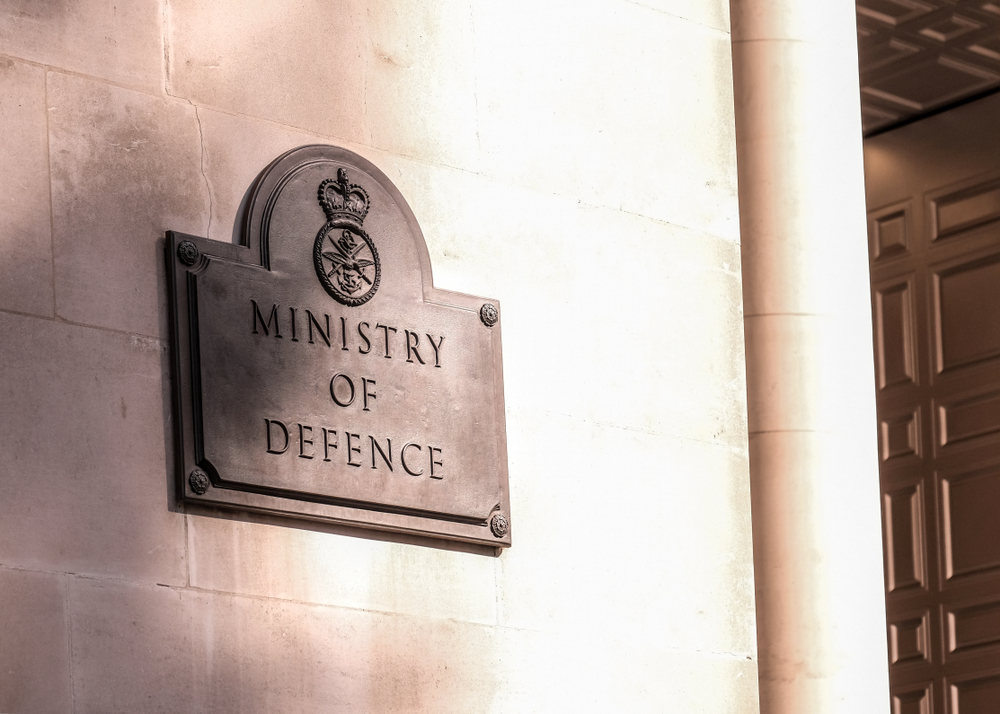
Charles Forte, CIO of the UK’s Ministry of Defence, is building a digital backbone that will help equip the country’s armed forces with “game-changing” capabilities and cutting-edge technologies.
The MoD is truly a behemoth of central government, employing 200,000 military personnel and more than 50,000 civilian staff and encompassing more than a dozen executive agencies. Speaking at this week’s CIO Town Hall Live forum from Tech Monitor publishers New Statesman Media Group, Forte outlined how the Covid-19 pandemic had been a catalyst for digital transformation at the MoD and his ambitions to develop a ‘digital foundry’ for defence.
“I took the job because of the way the Ministry of Defence described its ambition to really get after the exploitation of game-changing digital capabilities,” Forte explained.
“In order to make that happen, there was a clear realisation that Defence couldn’t carry on managing its digital capability the way it had been, which I would characterise unfairly as tending towards a conglomerate view of the world, to a much more integrated view.
The CIO role “sits on the Defence ExCo, the senior executive management group that sits under the Defence Board chaired by the secretary of state”.
“The creation of the post at director-general level was as much about making sure we could create the strong horizontal integrations to make sure data can flow from one part of the organisation where it might be created, to where it might need to be used, picking up bits of value along the way, to some other completely disparate part of the organisation,” Forte explained.
Information integration
The defence sector is a pioneer in many areas of digital innovation, Forte explained. His mission is to help the MoD deliver that innovation at scale.
“It’s about making sure we apply those digital opportunities in a way that cuts right across the whole organisation, so that we are actually adding value to someone on the front line – and that may be a soldier on the ground in an operational context – with the absolute best that we can give them in terms of real, live intelligence and data about what’s going on around them, or the ability to connect to other military domains, whether they are Air, Land of Sea,” he said.
Forte echoed the comments made by British Army CIO Major General Jonathan Cole, who spoke at the CIO Town Hall Live forum in July 2020, when he said that “data is our new ammunition” that the military needs to “bring to bear, integrate, and make available across a much greater landscape”.
Building a digital backbone
To realise this strategy, the MoD is modernising its core platforms and capabilities, dubbed the department’s “digital backbone”.
This has many facets including developing hyperscale cloud capabilities on secure, resilient networks, organising and integrating its data, upskilling its people, nurturing its supplier ecosystems, and integrating its management processes so the organisation operates more like a cohesive body than a conglomerate of silos.
The MoD’s use of public cloud, as well as its cybersecurity innovations, won it a place in Tech Monitor’s inaugural Technology Leaders Index, which highlights 25 innovative organisations, and the Ministry of Defence was represented for its adoption of public cloud as well as its innovations in the cyber domain.
Like many organisations, the MoD’s digital transformation initiatives have been catalysed by the Covid-19 pandemic. Forte quipped that his department “unashamedly used the challenge that we had in the first part of lockdown” to accelerate its modernisation programme.
The MoD had started moving almost 200,000 people from a fixed-desktop world into one which the CIO described as “mobile-first”.
“We took advantage of the Covid opportunity to really accelerate that,” he said. “And we used the opportunity to really drive a bulldozer through lots of authorisation processes. I’m not going to pretend that we solved everything, but we made huge progress.
“As ever, getting the technology problem solved, hard as it is, often ends up being the simplest part of the journey. The challenge we are now facing is how we equip people with the ability to work collaboratively when they are remote. What are the behaviours and different kinds of business processes that need to go with that?”
SMEs and the digital foundry
Forte’s vision for the department’s digital transformation is to create a ‘digital foundry’ for the MoD. In his analogy, the MoD’s digital capabilities would be the equivalent of the foundries of the industrial age, “around which people can coalesce, where really amazing products get thought about, designed and turned into usable products”.
Accessing digital innovation from SMEs will be crucial to creating that foundry, Forte explained. “Part of that would be an innovation hothouse for SMEs, that has them coalesce around a conversation – ostensibly about defence – and using them to help deliver capability much faster through to the front line,” Forte explained.
To gain access to digital innovation through its partner ecosystems, the MoD needed to get “an awful lot slicker in our acquisition processes,” Forte said. “We are a juggernaut with complex processes; some of it is because we need the rigour, but we do have to be a bit more quick and a bit fleeter of foot.”
AI at the MoD
A key component of the foundry is, of course, cutting-edge technology. Forte explained that artificial intelligence (AI), in particular, is increasingly critical to the MoD’s strategic aims.
“AI will show up in virtually all aspects of either business decision-making about how we run the department, and better, smarter and faster ways of running physical plants and machinery, be that aircraft or ships,” he said. “But it will also apply in the wider intelligence space.”
He also identified synthetics – the use of virtual and augmented reality in military training and exercises – as a vital area of innovation.
Talent will be equally vital, however: recruiting and developing diverse digital teams would be critical to the success of the Ministry of Defence’s transformation agenda, said Forte.
Having secured increased investment defence spending from central government, Forte said that “it’s a hugely exciting time” for the department. “Anyone out there watching who has ever had an inkling to be connected to the amazing world of UK defence, we are increasingly out there looking for talent.”
Featured photo by Willy Barton/Shutterstock.






